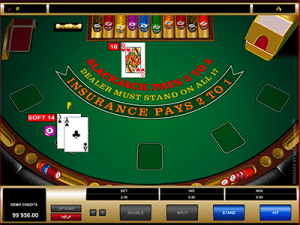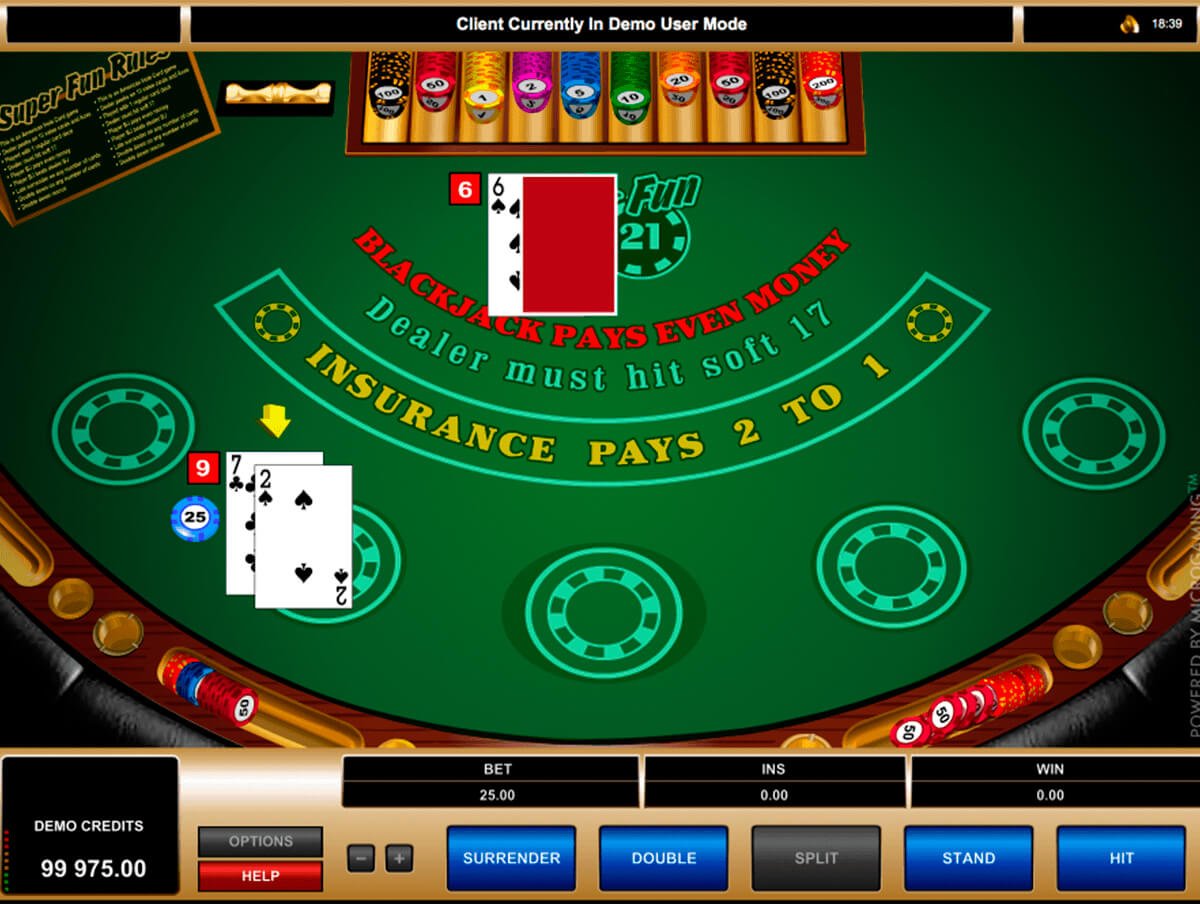How To Play Soft Hands In Blackjack
Dealer hits soft 17: If, instead of standing on all 17s, the dealer hits hands including an ace or aces that can be totaled as either 7 or 17, the house edge is increased by 0.2 percent. Blackjack pays 6-5: Common on single-deck games on the Las Vegas Strip, this game is a bankroll breaker for players. Unlike in poker, the suits of the cards have no effect on the game. Only their numerical value comes into play in blackjack. Cards 2–10 are counted at face value—in other words, a two of hearts, spades, diamonds, and clubs always equals two points, and so on up the ladder to the 10.
Blackjack is a complicated game of skill. Many players around the world try to master their skills and become professionals. In order to do this they learn the basic blackjack strategy which is a kind of tutorial with basic moves which help to play successfully. Moreover, players may increase their blackjack odds by memorizing the blackjack strategy chart with possible decisions for players. The chart helps players to decide whether to hit, stand, double down or split after the first two cards were dealt. The decision depends on the player's cards and the dealer's face up card. The first two cards dealt to the player can be called soft or hard hand. The strategies for playing differ between them. Let us consider the basic rules for playing soft hand but players should keep in mind that any kind of strategy cannot guarantee the winning in blackjack card game but it definitely increases the chances for winning.
Strategy for Soft Hand
Soft hand is the name of the player's hand with Aces which are counted as 11. There are set of possible and advised decisions for players taking in account the number of points in player's and dealer's hands.
Soft player's hand (Ace is counted as 11) | Dealer's hand (face up card) | Basic rules |
13 or 14 | 5 or 6 | Double or Hit |
15 or 16 | 4, 5 or 6 | Double or Hit |
17 | 3, 4, 5 or 6 | Double or Hit |
18 | 3, 4, 5 or 6 | Double |
18 | 2, 3, 4, 5, 6, 7or 8 | Stand |
18 | 9, 10, face cards or Ace | Hit |
19, 20 or 21 | Stand |
These were the basic rules for playing but players are free to make their own decision if they like. Blackjack is the game where risk is always present. If you are a card counter, usage of these basic strategies will not be a necessity for you, as counting if cards allows to understand what cards are left in the shoe and how good your chances are to have a necessary for your winning card. If you do not count cards – you make take the decisions by oneself, relying upon your intuition. Of course, that will not guarantee you a winning, but, in fact, nothing will do that!

We all know what to do when you get pocket Aces or eights at the blackjack table…split!
But, what is the right play when you take your first hit and there is a decision to take another card…or not?

We’ll show you!
PLAYING MULTI-CARD HANDS is often confusing for players. For example, suppose you were dealt an Ace-4 (soft 15) and the dealer shows a 2. You hit and draw a 3 for a soft 17 (Ace-4-2). How would you play the soft 17? What about these multi-card hard hands, a 10-6 and a 4-5-7 against a dealerâ??s 10 upcard? Would you stand or hit? If you are not sure, stay with me and Iâ??ll show you how to play these multi-card hands perfectly.

Letâ??s begin with multi-card soft hands. These hands contain three or more cards with an Ace counted as an 11. For example, suppose you were dealt an Ace-2 and the dealerâ??s upcard is a 3. If you look up this hand (soft 13) in a basic strategy table, it would state â??Hâ? for hit. Suppose you hit and drew a 5, giving you a multi-card soft 18 (Ace-2-5). If you looked up soft 18 against a 3 in a strategy table, you would see â??Dâ? (for double down). However, the double down option is no longer available to you after you hit. So what would you do with your soft 18, stand, or take another hit? The correct play is to stand.
Here are two rules that you need to memorize so you will always play multi-card soft hands perfectly.
1 Always stand on soft 18 through 21, except hit a multi-card soft 18 against a dealer 9, 10 or Ace.
2 Always hit soft 17 or less.
Try these hands so you get the gist of how these rules work. Suppose you are dealt Ace-3, and the dealer shows a 7. You hit and draw an Ace for three-card soft 15 (Ace-3-Ace). You hit again and draw a 2 for a soft 17 (Ace-3-Ace-2). Now what do you do? Youâ??ve converted an initial two-card soft 13 hand into a multi-card soft 17 hand. According to the second rule above, you should hit again.
How To Play Blackjack
How about this hand: dealer shows a 7 and you have an Ace-4. You draw a 2 for a multi-card soft 17. According to Rule 2, you hit again. Suppose you draw another Ace, giving you a multi-card soft 18 (Ace-4-2-Ace). According to our first rule, you should stand.
Try this hand: Ace-4 against a dealerâ??s 9. You hit your soft 15 and draw a 3 for a multi-card soft 18 (Ace-4-3). According to rule #1, you should hit again.
Now letâ??s focus on multi-card hard hands. These are hands that either donâ??t contain an Ace, or if the Ace is present, it counts as 1. The most important multi-card hand that requires a change in playing strategy is the multi-card 16.
Suppose you are a dealt a 16 against a dealerâ??s 10 (and surrender is not available). Traditional basic strategy, often referred to as â??total-dependentâ? strategy, tells you to hit your 16, because in the long run, you will lose less money compared to standing. However, what traditional basic strategy doesnâ??t consider is the composition of the hand. It turns out there is a difference between a 16 made up of two cards, such as 10-6, and a 16 made up of three cards, such as 4-5-7. Both hands total 16, but with the three-card 16, you are better off standing, whereas with the two-card 16, you should hit.
How To Play Soft Hands In Blackjack Free
The reason you should stand on a 16 when your hand contains three or more cards is your hand contains one or more small-value cards that are no longer available in the pack of unplayed cards. These small cards are exactly what you need to make a pat hand when you hit your 16. The fact that a few of them just landed in your hand is enough to shift the odds toward standing rather than hitting.
Hereâ??s another playing tip that doesn’t involve a multi-card hand, but is based solely on the composition of the hand. Suppose you are a dealt a 12 against a dealerâ??s 4 upcard. Total-dependent basic strategy says you should stand on 12 against a dealer 4. However, there are in fact four different ways to be dealt a 12: 10-2, 9-3, 8-4, and 7-5 (6-6 is considered separately, as a pair to be split). In the specific case of 10-2, you are slightly better off hitting against the dealerâ??s 4, whereas with 9-3, 8-4, and 7-5, you are better off standing.
Blackjack author Don Schlesinger, gives this reason for the change in strategy:
â??By having just one ten-value card in your hand when you hold a 10-2, you slightly lower your chances of breaking with a hit just enough to tip the balance in favor of risking busting by drawing one more card, rather than standing. This effect, however, diminishes as the number of decks increases, because removing one ten out of 16 is a lot more dramatic than removing one ten out of 128 for an eight-deck game. Therefore, for six or fewer decks, itâ??s best to hit a 12 consisting of 10-2 against a dealerâ??s 4 upcard, but in an eight-deck game, itâ??s best to stand.â?
Best Hands In Blackjack
â??IT TURNS OUT THERE IS A DIFFERENCE BETWEEN A 16 MADE UP OF TWO CARDS, SUCH AS 10-6, AND A 16 MADE UP OF THREE CARDS, SUCH AS 4-5-7â?
Author Bio:Â Henry Tamburin is a blackjack and video poker expert. For a free copy of his Casino Gambling Catalog containing books, strategy cards, DVDs, and software for blackjack, video poker, and other casino games, call toll free 1-888-353-3234 (or view the catalog online at smartgaming.com). For a free three-month subscription to his monthly Blackjack Insider newsletter, go to bjinsider.com/freetrial. Tamburinâ??s websites are smartgaming.com and bjinsider.com. He is available as a guest speaker at conventions. Contact him at HTamburin@aol.com.